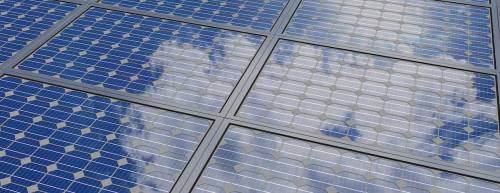Plans for the city of Georgetown to add solar power to its mix of energy suppliers will be delayed until July 1, 2018.
The city had expected the solar farm, located in Pecos County, to be operational by the end of this year and begin providing power in early 2017; however, the company working on the project—SunEdison—filed for bankruptcy in April, and the solar farm was purchased by NRG Energy Inc.
Georgetown City Council approved a new agreement Nov. 8 that authorized NRG to purchase and take over the project, Mayor Dale Ross said at the GridNext energy conference, which was held in Georgetown on Nov. 9-11.

NRG spokesperson Erik Linden said the agreement will be the company’s first utility-scale solar project in Texas.
“We have been really wanting to do this for some time, and once we saw the right opportunity, we jumped at it,” Linden said. “Texas is on the cutting edge; a city like Georgetown is ahead of [its] time.”
In a statement, Ross also said the agreement will allow the city to provide 100 percent renewable energy to its customers.
“The sale of this solar project to NRG Energy marks an important milestone in our plan to provide fixed, competitive costs to our utility customers for the next 20 years,” Ross said. “[It allows] Georgetown to become one of the first cities in the nation with 100 percent clean, renewable energy.”
City Council originally approved the agreement with SunEdison in February 2015 to provide a daily maximum output of 150 megawatts of solar-generated power. The new agreement with NRG will continue through 2042.
Jim Briggs, Georgetown general manager of utilities, said SunEdison also fell behind with deadlines and production, which led to Georgetown striking a cheaper deal with NRG.
“Because of the delay in the project we will have to have an arrangement for replacement energy, [and] there will be a cost [for that],” Briggs said. “So while there may be a cost reduction [in the new deal], we have to make that [energy] up elsewhere, and we will incur a cost in the short term even though [we will save] in the long term.”
The city is receiving more wind energy than was thought possible from the 144-megawatt Spinning Spur 3 wind farm in Amarillo, which currently produces more energy than the city needs. However, because the farm produces energy during off-peak times that cannot be stored for later use, the city must supplement with natural gas energy during peak demand. By selling off the extra wind energy produced at the farm and applying renewable energy credits to the natural gas, the city technically achieves 100 percent use of renewable energy now.
The city, which began receiving wind energy in September 2015, receives enough electricity to power 58,200 homes annually, according to the city. The wind power agreement will continue through 2035.
Although the city is receiving enough energy from the wind farm alone, Briggs said wind and solar energy patterns complement each other.
“Wind in the Panhandle typically blows [stronger] at night,” Briggs said. “What happens is you will have [wind] energy production during the day that will drop off a little and then come back up. Solar comes in and starts picking up [when wind slows down], and when the sun goes down [solar] drops off and [wind picks back up].”
Financial stability
In 2013, when the city was looking to sign a new energy contract, officials were looking for a fixed-rate and competitive source.
Ross said the decision to move forward with the combination of solar and wind energy made the most sense from a financial perspective.
“The decision was first and foremost a business one,” Ross said. “One of the benefits of renewable energy was for economic development.”
The decision to go forward with wind and solar energy was not only the cheapest option at the time but also the safest in terms of pricing and volatility, unlike gas, Briggs said.
“Over the long term, it is probably the cheapest, but it is also the least risky from being able to manage the dollars,” Briggs said. “I know [for the next 25 years] what I have to do.”
Chris Foster, Manger of Resource Planning & Integration for Georgetown, said the decision to go green was made when the contracts were signed in 2013, and that goal still makes sense in 2016.
“We just bid for power,” Foster said. “The wind prices that were coming in in 2013 were so low that it did not make sense to take any other power. Even today, the contract we got then is still bottom of the market.”
The city even has opportunities to sell off its solar energy.
Currently, Georgetown is receiving more energy than it needs, and that excess energy will only increase with the addition of solar, Briggs said. The city can sell that extra energy to other utilities or in the market.
Looking to the future
In 2016, the city of Georgetown was named the fastest-growing U.S. city of more than 50,000 people by the U.S. Census Bureau. Briggs said if the population continues to grow at the same rate, the city would have to find a way to bring in additional energy sources.
Although options are still being evaluated, Briggs said there is one effort that is in the trial stages.
“We are looking at battery storage as an option,” Briggs said. “You can store the energy you are not using at night and stick it in a battery, and then when you need to [use it], you can to meet that demand.”
Briggs said there is still time to develop a plausible resource, and for now, the city is working to ensure the implementation of solar in 2018.




